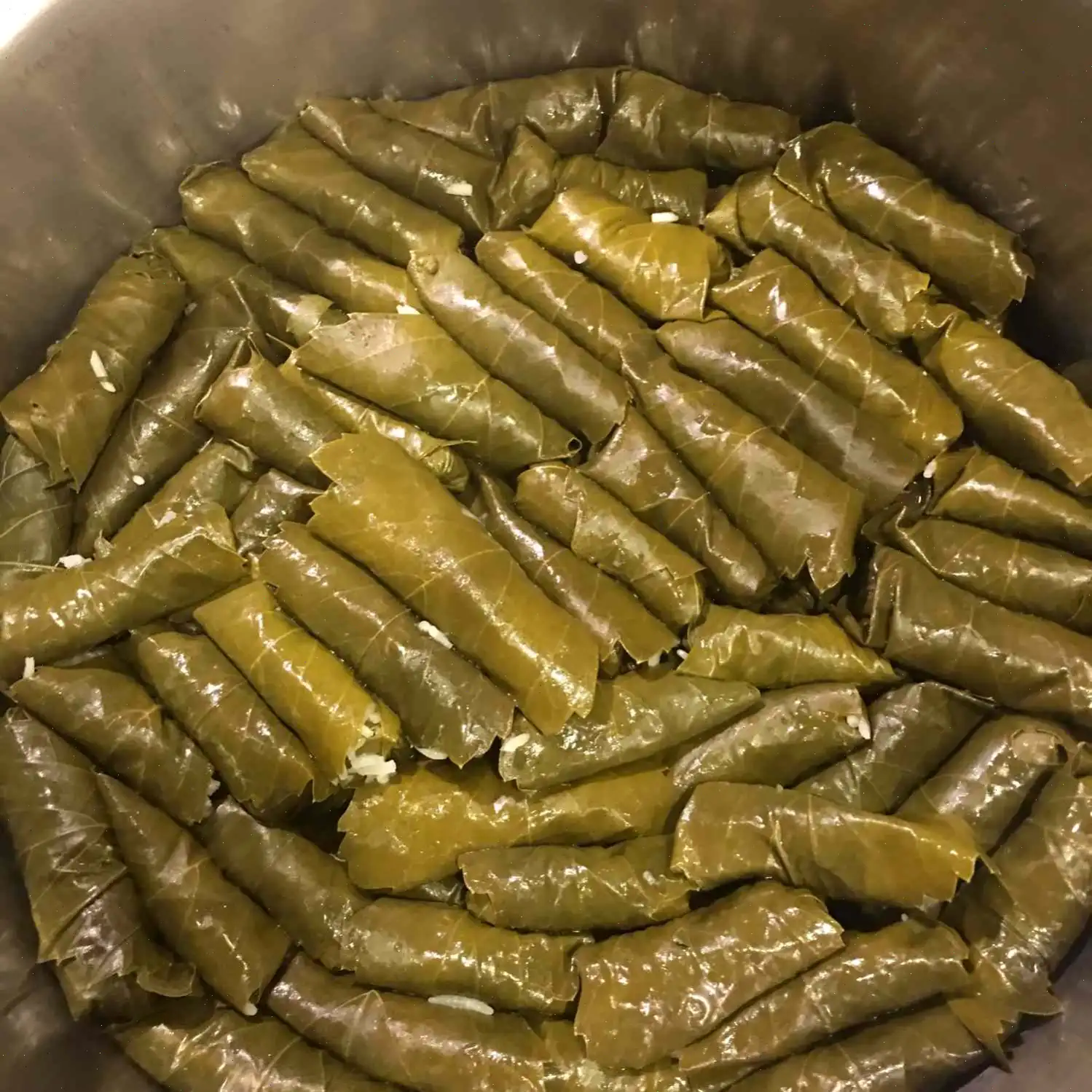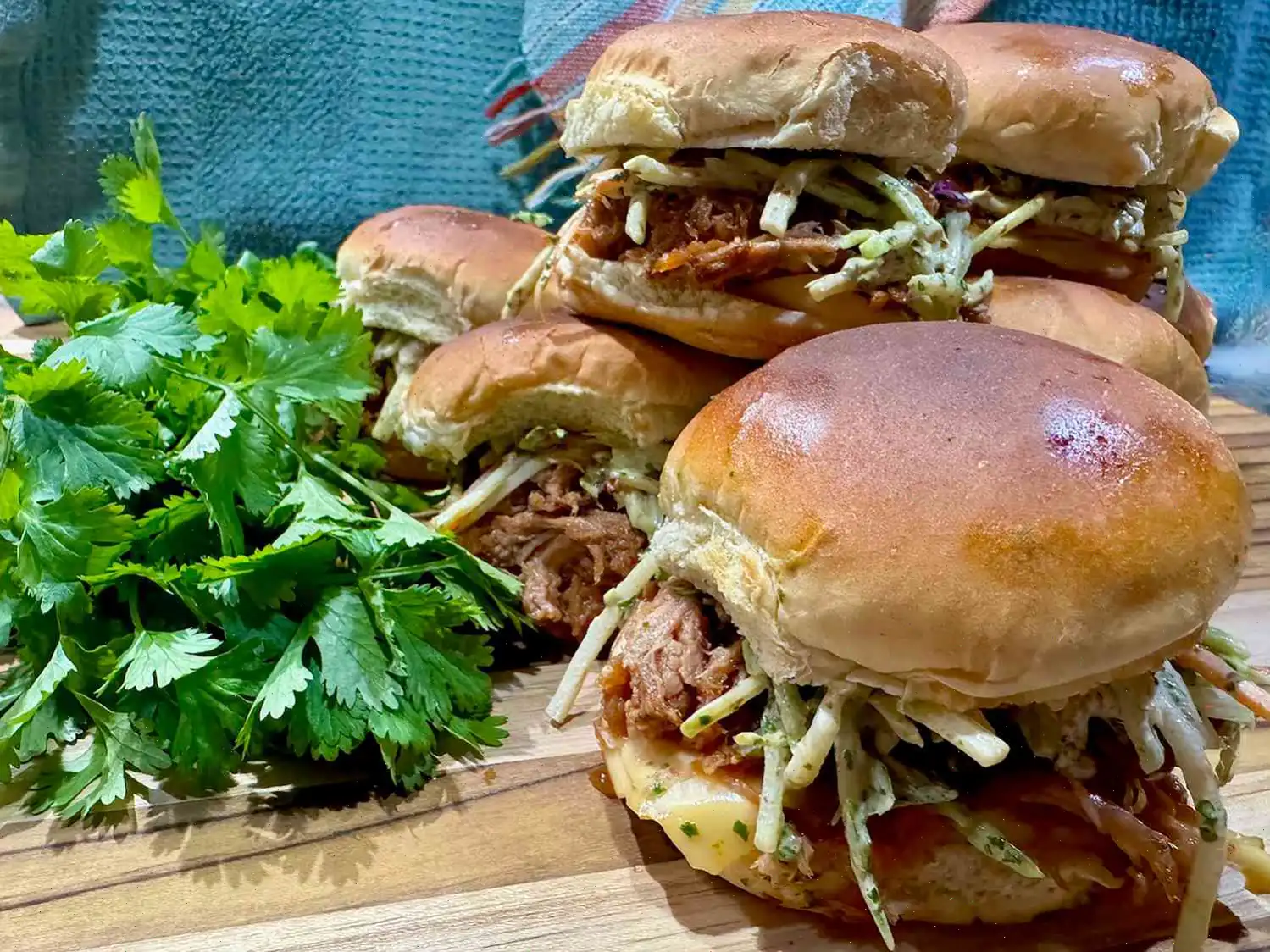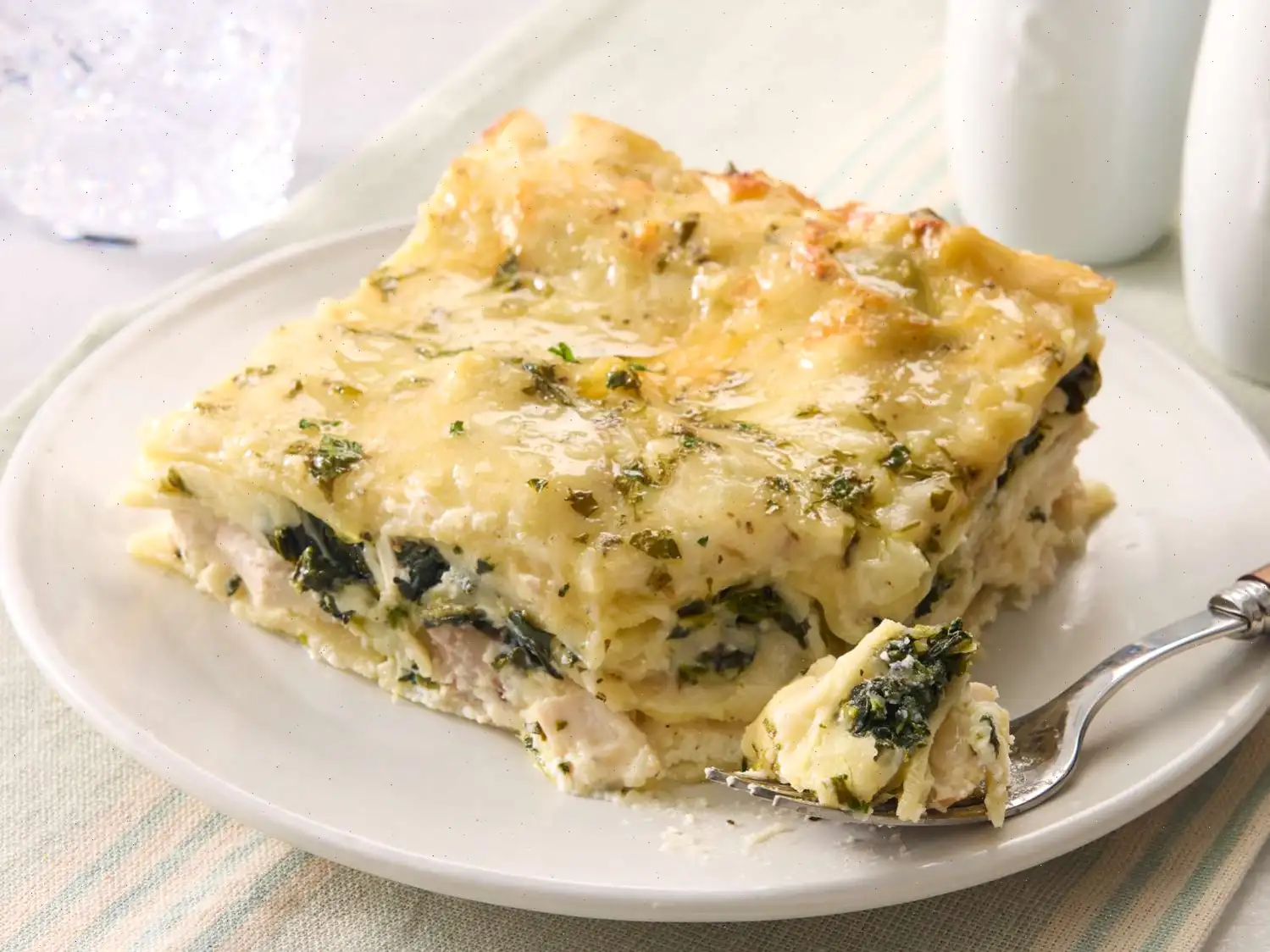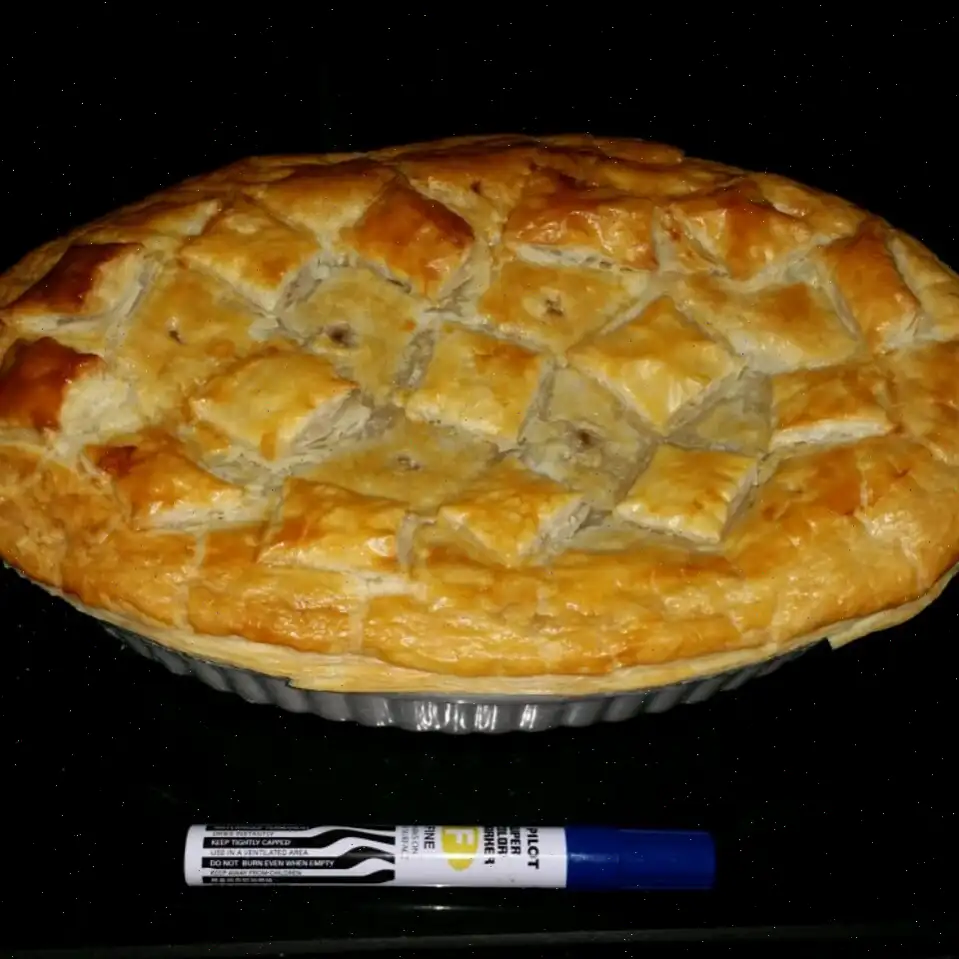
My Own Famous Stuffed Grape Leaves Recipe
Ingredients
- 1 tablespoon olive oil
- 2 cups uncooked long-grain white rice
- 1 large onion, chopped
- cup chopped fresh dill
- cup chopped fresh mint leaves
- 2 quarts chicken broth, divided
- cup fresh lemon juice, divided
- 60 fresh grape leaves
- 1 cup olive oil
Directions
Step 1: Heat olive oil in a large saucepan over medium-high heat. Add the rice, onion, dill, and mint. Saut until the onion becomes soft, approximately 5 minutes.
Step 2: Pour in half of the chicken broth and reduce the heat to low. Let it simmer until the rice is almost fully cooked, around 10 to 15 minutes. Stir in half of the lemon juice and remove from heat.
Step 3: Prepare the grape leaves by plunging them into a deep of very hot water for about 10 seconds, until soft. Pat them dry with a towel.
Step 4: Place a grape leaf on a flat surface with the shiny side facing down. Add 1 teaspoon of the rice mixture at the stem end of the leaf. Fold both sides in toward the center and roll from the wide bottom to the top. Place the stuffed grape leaf into a 4-quart pot. Continue to stuff the remaining grape leaves, packing them tightly in the pot so they don't open while cooking.
Step 5: Drizzle olive oil and the remaining lemon juice over the stuffed leaves. Pour in the remaining chicken broth until the leaves are covered. Cover the pot and simmer on low for about 1 hour. Avoid boiling, as this could cause the stuffing to burst out of the leaves.
Step 6: Remove from heat, uncover, and allow to cool for 30 minutes. Transfer the stuffed grape leaves to a serving dish and enjoy.
Nutrition Facts (per serving)
- Calories: 303
- Fat: 19g
- Carbs: 31g
- Protein: 4g
- Sodium: 573mg
- Fiber: 1g
- Sugars: 1g
- Vitamin C: 12mg
- Calcium: 76mg
- Iron: 2mg
- Potassium: 88mg
Servings Per Recipe: 12
Percent Daily Values are based on a 2,000 calorie diet. Your daily values may vary depending on your calorie needs. For a medically restrictive diet, please consult your doctor or dietitian before preparing this recipe.

Stuffed grape leaves, also known as dolmas, are a beloved dish in Mediterranean and Middle Eastern cuisines. The recipe featured here is a delicious and refreshing vegetarian variation of this classic, filled with a mixture of rice, fresh herbs, and lemon juice, making it a perfect appetizer or side dish. Let's take a deeper dive into the origins, regional variations, and the distinctive nature of this dish.
History and Origins
The tradition of stuffing grape leaves dates back thousands of years, with roots in the ancient Mediterranean. While the exact origin is debated, it is believed to have originated in the Eastern Mediterranean and spread across regions from Greece to Lebanon, Turkey, and beyond. The Greeks and Turks have particularly popularized the dish, often served as part of mezze platters or festive occasions. It is known as "dolma" in Turkey and Greece, where the name translates to "stuffed." The dish likely evolved as a way to preserve the grape leaves, which were abundant in the region, while using local ingredients like rice, herbs, and meat. Over time, the dish adapted to different tastes and dietary restrictions, resulting in the vegetarian versions we enjoy today.
Regional Variations
Throughout the Mediterranean and Middle East, stuffed grape leaves are made in a variety of ways, depending on the region. In Greece, the stuffing typically consists of rice, fresh herbs like dill and mint, and sometimes pine nuts. Lamb or beef can be added in some versions, but the vegetarian variation is also widely enjoyed. In Lebanon, the rice mixture is often spiced with allspice or cinnamon, while in Turkey, the filling may contain pine nuts, currants, and even tomatoes for added sweetness. Each region puts its unique spin on the dish, reflecting local ingredients and cultural preferences. The key to a successful dolma is the careful balance of the herbs and the tenderness of the grape leaves.
How It Differs from Similar Dishes
While stuffed grape leaves share similarities with other stuffed vegetable dishes, such as stuffed bell peppers or zucchini, there are a few distinguishing characteristics. The use of grape leaves, which have a slightly tangy taste, gives this dish a unique flavor. Additionally, the Mediterranean stuffing mixture often includes a variety of fresh herbs like dill and mint, giving it a refreshing taste that is different from more common stuffed vegetable fillings. The delicate wrapping of the rice mixture in grape leaves also offers a pleasant texture contrast, as the leaves soften during cooking while maintaining a slight bite.
Where Its Typically Served
Stuffed grape leaves are a staple in many Mediterranean and Middle Eastern households, often enjoyed as part of a mezze spread or served alongside main courses like grilled meats or fish. They are also common at gatherings and celebrations, such as holidays and weddings. The dish is equally popular in restaurants and at home, with many variations depending on the cook's background. In Greece, stuffed grape leaves are often served with a side of tzatziki sauce, while in Turkey, they may be accompanied by yogurt. It's also common to find dolmas served cold, which enhances the freshness of the herbs and the lemony tang, making them perfect for warm weather dining.
Fun Facts
- The act of rolling the grape leaves is an ancient tradition and is often seen as a family bonding activity in many cultures. In some households, the process of making stuffed grape leaves can take hours, with generations of family members participating.
- Grape leaves are a rich source of vitamins and antioxidants. When used in dolmas, they not only provide a unique flavor but also contribute to the nutritional value of the dish.
- In Greece, it's said that dolmas are best enjoyed with a glass of ouzo or raki, two traditional Mediterranean spirits. The pairing of alcohol with the tangy and herb-filled dolmas enhances the overall experience.
- In some Middle Eastern cultures, stuffed grape leaves are made with a filling of meat and rice, but the vegetarian versions are growing in popularity, especially as more people turn to plant-based diets.
FAQ about My Own Famous Stuffed Grape Leaves Recipe
Comments
Katherine Young
01/19/2025 04:23:17 AM
I thoroughly enjoyed preparing and cooking this recipe, although it did take some time as it was my first attempt. I personally prefer using fresh herbs like mint, dill, and onions for the best flavor. Sautéing them in olive oil really brought out their aromatic and flavorful qualities. I find that using dried herbs doesn't quite match up in terms of taste. Mixing the cooked herbs with dry rice before spreading them evenly in the pot was a key step. In the absence of chicken broth, I substituted with 2 cubes of chicken bouillon dissolved in water. The kitchen smelled amazing as the ingredients cooked together. For the rice filling, I used 1.5 cups of brown rice cooked in 2 cups of water. I followed the instructions for preparing the grape leaves, rinsing and soaking them before wrapping the rice mixture. It took a few tries to get the hang of wrapping the leaves, but I eventually got the hang of it. After arranging the stuffed grape leaves in a pot, I added lemon juice and olive oil, allowing them to simmer. Since I didn't have chicken broth, I improvised by creating a simple chicken broth with a bouillon cube and water. I poured just enough over the grape leaves to cover the bottom of the pot, relying on condensation for cooking. This technique helped prevent the rice from expanding out of the leaves. Once the stuffed grape leaves had cooled, I drizzled them with more olive oil and a sprinkle of lemon juice for a finishing touch.
Daniel Sanchez
02/09/2023 04:45:11 AM
I followed this recipe as a base and customized it by incorporating sauteed ground lamb with onions, garlic, sweet pepper, pine nuts, a splash of red wine, cinnamon, and a dash of cayenne into slightly undercooked brown rice. I used jarred grape leaves and a glass plate or smaller pot lid inside the pot to keep the dolmas in place while simmering. Reminded me of the dolmas my Syrian grandma used to make :-)
Donald Carter
10/20/2024 07:55:08 PM
This recipe is the key to achieving delicious dolmades! Start by whisking together the juice of 1-1/2 lemons and 2 egg yolks until well combined. Gradually pour 1 cup of liquid from the dolmades into the lemon-egg yolk mixture while whisking briskly. Whip the egg whites until frothy, then gently fold them into the lemon mixture. Pour this creamy mixture over warm dolmades and enjoy the perfect result. Your dolmades will turn out absolutely fantastic with this technique!
Michelle Martin
11/23/2023 01:56:32 AM
Flawless as it is, although I personally favor vegetable broth. Here's a handy tip: Rinse, dry, and then FREEZE the leaves. Freezing softens them (by causing wilting) - making them just as tender as canned leaves. Simply let them freeze completely in the freezer - the time will vary based on the size of the stack. Thaw them completely, gently separate, and roll 'em up. Thank you for the fantastic recipe!
Deborah Lee
03/17/2025 05:07:42 PM
I made a delicious dish by wrapping a mixture of rice, sautéed onion, mint, dill, and lemon in wilted Swiss chard leaves. I cooked the flavored rice in lemon-infused vegetable broth and combined it with ground beef seasoned with Greek spices. After rolling the mixture in the Swiss chard leaves, I covered and heated them through. Optionally, you can serve them with tomato sauce or yogurt. This recipe yielded around 14 flavorful rolls.
Diane Gonzalez
11/29/2024 11:11:31 PM
I absolutely adore how effortless and straightforward this recipe is! My husband is a big fan too. The flavors are fantastic! A huge thank you for sharing this recipe! 🌟
Jennifer Walker
10/02/2023 03:51:58 AM
This was my first attempt at preparing stuffed grape leaves. While it took some time, I believe they turned out quite well. They are currently simmering in broth, and I am unsure about the next steps as the instructions were not very clear. I presume I should strain the broth and leave the grape leaves intact. Fingers crossed that they will turn out fine.
Daniel Robinson
02/01/2024 09:06:18 AM
This recipe is absolutely fantastic and I will definitely be making it again and again. It's simple and the grape leaves I purchased made the rolling process much smoother than I've previously encountered. We enjoyed them warm, but they were equally delicious served cold!
Carolyn Lee
08/01/2023 04:39:43 PM
Instead of wrapping the rice mixture in the leaves, I decided to finely chop the leaves and cook them together with the rice mixture. The result was fantastic!








